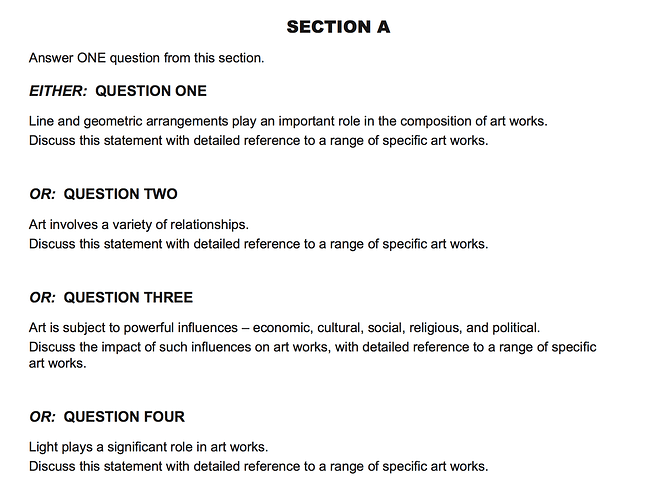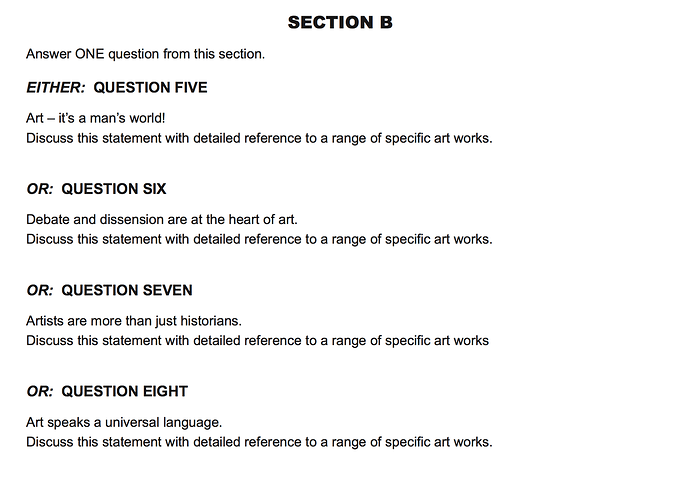Hi, I am wanting to take the art history scholarship next year despite having no prior knowledge of the subject. I do have a strong foundation in essay-writing though.
Does this exam build upon the content knowledge gained in Level 3? What is the preparatory workload like? How should I study to maximise my chances of passing this exam? Any general tips?
Thank you!
1 Like
Very exciting! The exam requires knowledge of a number of art pieces. Naturally, if you study Level 3 you will encounter art pieces which you can then use but Level 3 is absolutely not a requirement. Many of our students in 2015 won Art History scholarships despite never taking the exam in school.
Let me show you how:
You need to answer one question from each of the two parts. If you look at the first four questions you will find none of them reference any specific piece of art. In fact, you are allowed to reference any specific art work you have come across. This is very exciting for 2 reasons:
- It means you don’t need to have taken Level 3 NCEA but can simply have just self-studied a bunch of pieces of art and applied similar tools of analysis as English Literature
- Since you are allowed to use any piece of art, the people grading your exam can’t simply know all the pieces of art and thus are going to read your analysis with a very unbiased mind. They usually will know very little or nothing about the pieces of art you use, especially if you don’t use a piece of art from the NCEA Level 1, 2 or 3 curriculum.
One of my students chose to study Modern Art and we literally began our search for art pieces on Google Images and found a number of pieces we liked and analyzed them without any prior knowledge of the works or what artistic commentators had said about them.
You will see in Section B you again are not required to reference any specific pieces of art in the NCEA Level 3 curriculum.
Basically, you should go into this exam by getting familiar with 6-12 pieces of art. The most important skill here is your ability to analyze creatively and draw connections. You probably could use virtually any piece of artwork whether it be the rug you are sitting on, a piece of public art you bump into at the airport or your grandma’s teacup as a piece of art “that speaks a universal language”.
The best NZQA Art History Scholarship performers are those with a granular understanding of a few pieces of art work and rigorous creative writing and literary analysis skills.
1 Like

